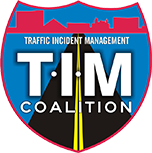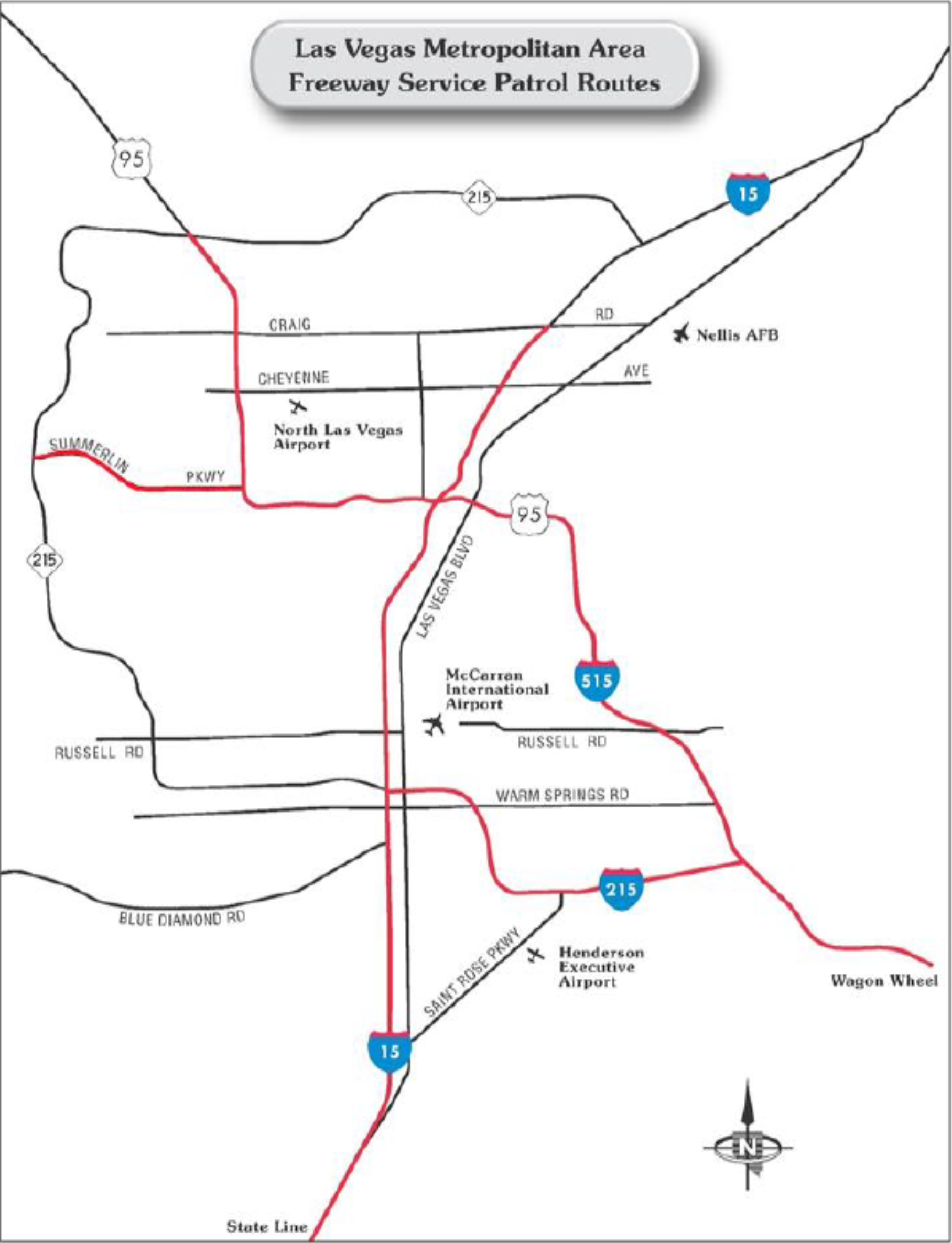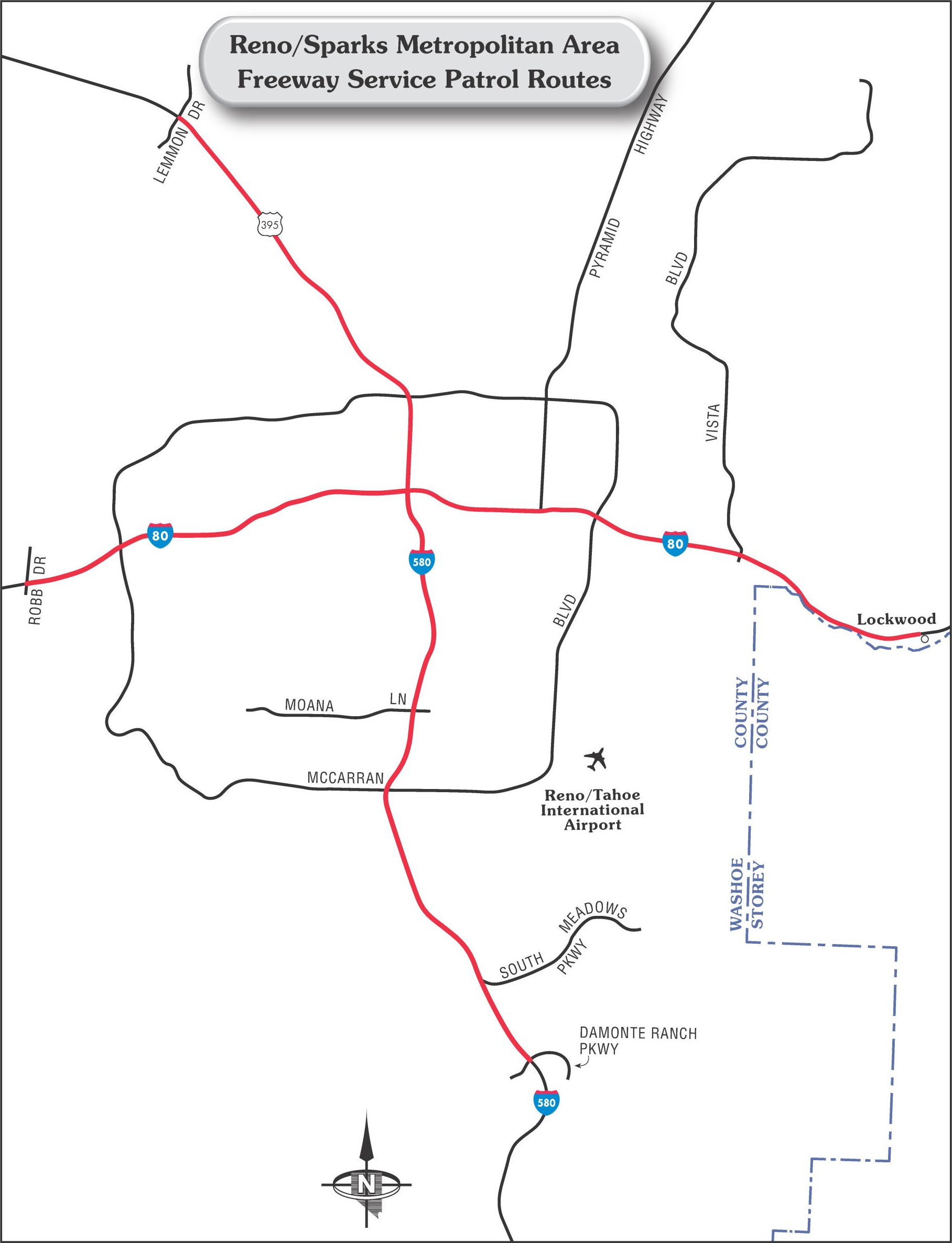Tim Initiatives
NDOT Freeway Service Patrol
Whether it’s a stalled vehicle, debris on the road, or a minor crash, the objective of the FSP program is to remove distractions from the road as quickly as possible to avoid impacting passing drivers. FSP technicians are certified in various fields such as hazmat safety, cardiopulmonary resuscitation, community first aid, basic automotive repair, and traffic incident management to ensure they are prepared to quickly remove minor incidents from the roadway. FSP technicians also collaborate with other public safety organizations including law enforcement, fire, paramedics and towing and recovery professionals to rapidly and safely address more complex traffic incident.
The FSP program utilizes several different types of vehicles capable of responding to a variety of incidents: all FSP vehicles are equipped with flashing lights, traffic control equipment, pop-up arrow boards, push bumpers, basic automotive repair equipment; and some FSP vehicles are capable of towing disabled vehicles from freeway travel lanes, placing them at the nearest secure location so that they can be safely removed by towing professionals.
Safety Patrol Van
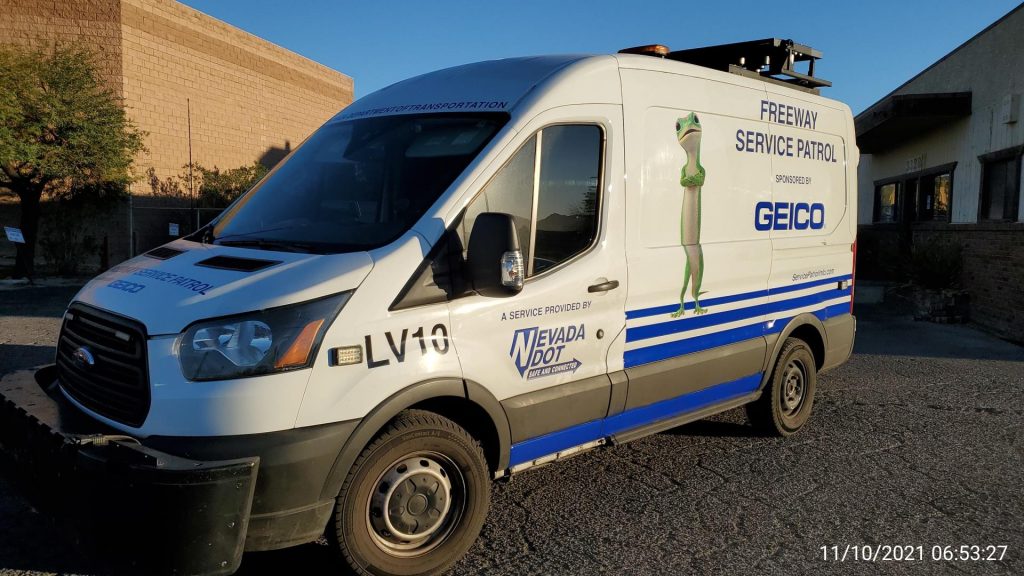
Wheel Lift Multi-Use Response Vehicle
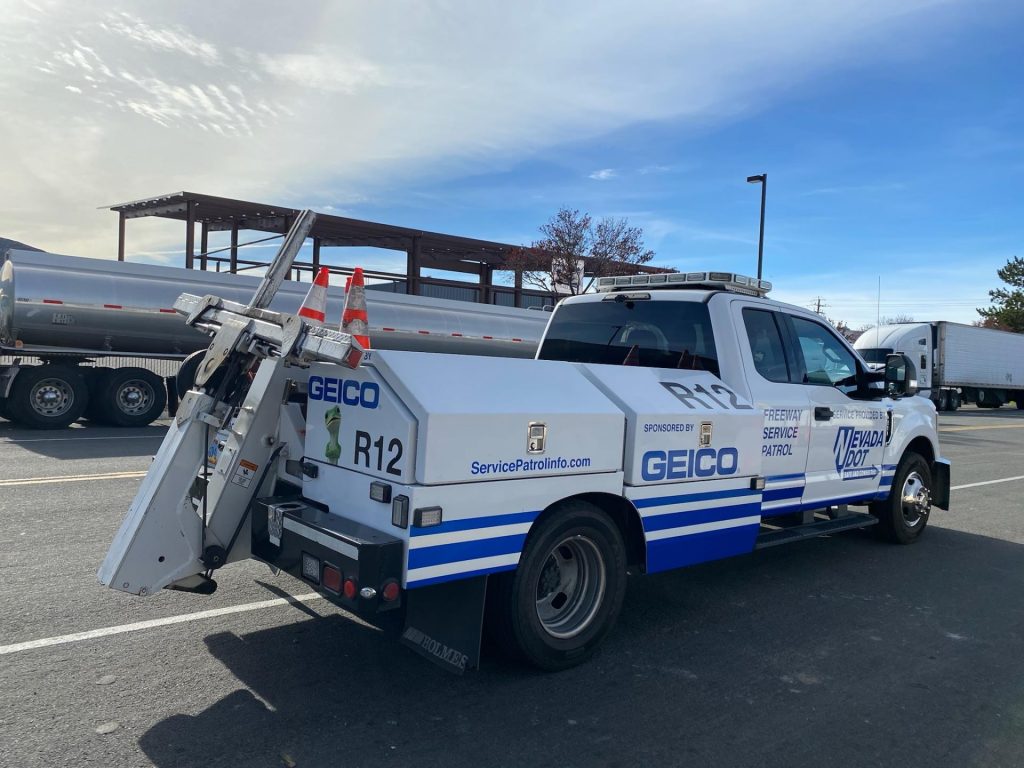
Flatbed Multi-Use Response Vehicle
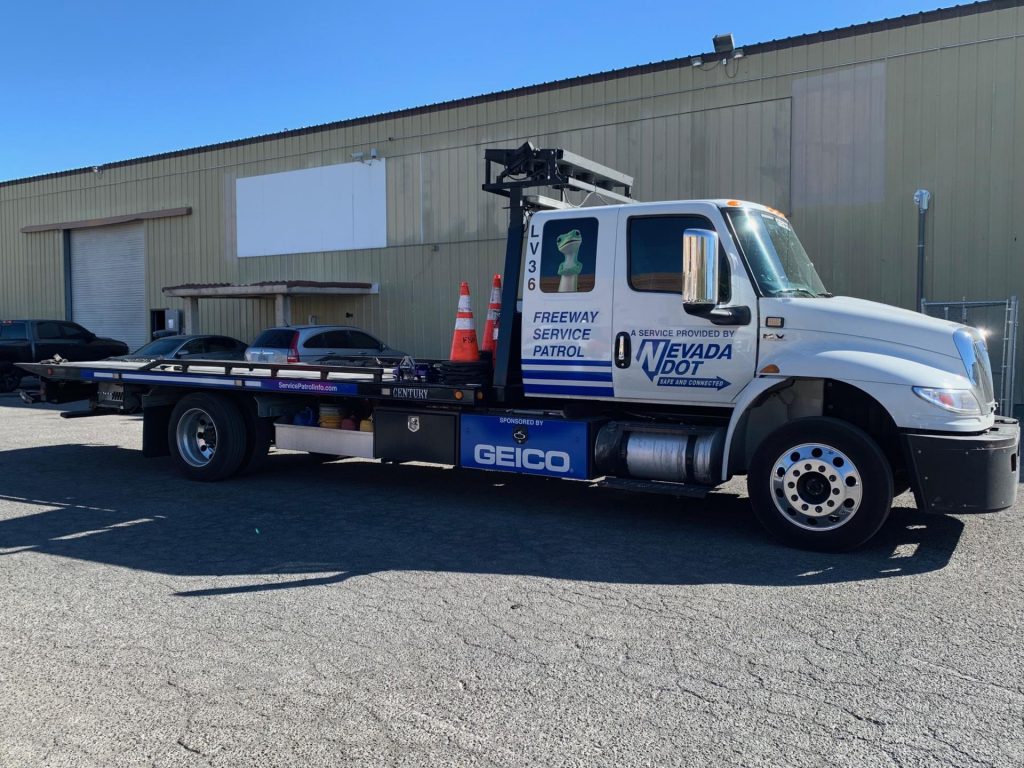
Incident Response Vehicle
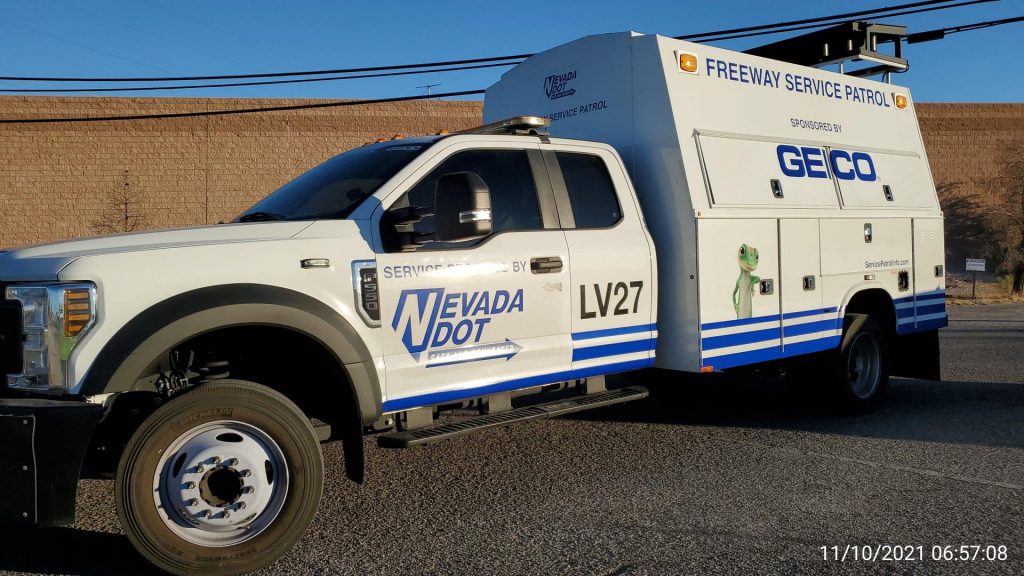
Contact Information
To best respond to vital roadway incidents, the Freeway Service Patrol is not available on-call, but will stop on their regular route to provide needed assistance. Dial 911 for emergencies or dial *NHP (*647) to report drunk drivers, traffic crashes, stranded or disabled motorists, or any suspicious roadside incidents to the Nevada Highway Patrol.
NDOT's Freeway Service Patrol Now Sponsored by GEICO
NDOT is proud to announce that our Freeway Service Patrol is sponsored by GEICO. The sponsorship will help create a long-term, supplemental funding source for the program. Have you received assistance? Share your story at www.ServicePatrolinfo.com or on social media using #SafelyOMW.
The NDOT Freeway Service Patrol program is operated by a service provider who is not authorized to contact GEICO on behalf of the motorists or assist in insurance claims.
Freeway Service Patrol Route/Time Information
To view the Las Vegas Freeway Service Patrol route schedule, click here. To view the Reno Freeway Service Patrol route schedule, click here.
Click on a map to enlarge:
Effective traffic incident management is vital to the successful operation of modern highway systems in the state of Nevada. By working towards an enhanced level of interagency coordination, collaboration and communication through the activities surrounding an active coalition of traffic incident management stakeholders there is a proven difference in roadway clearance times, enhancing safety and decreasing the number of crashes, even fatalities.
City and county boundaries are not contained by traffic, congestion knows no boundaries. As such, efficient performance of traffic incident management practices has increased in complexity, requiring technology and a well-planned, coordinated, multi-disciplinary response.
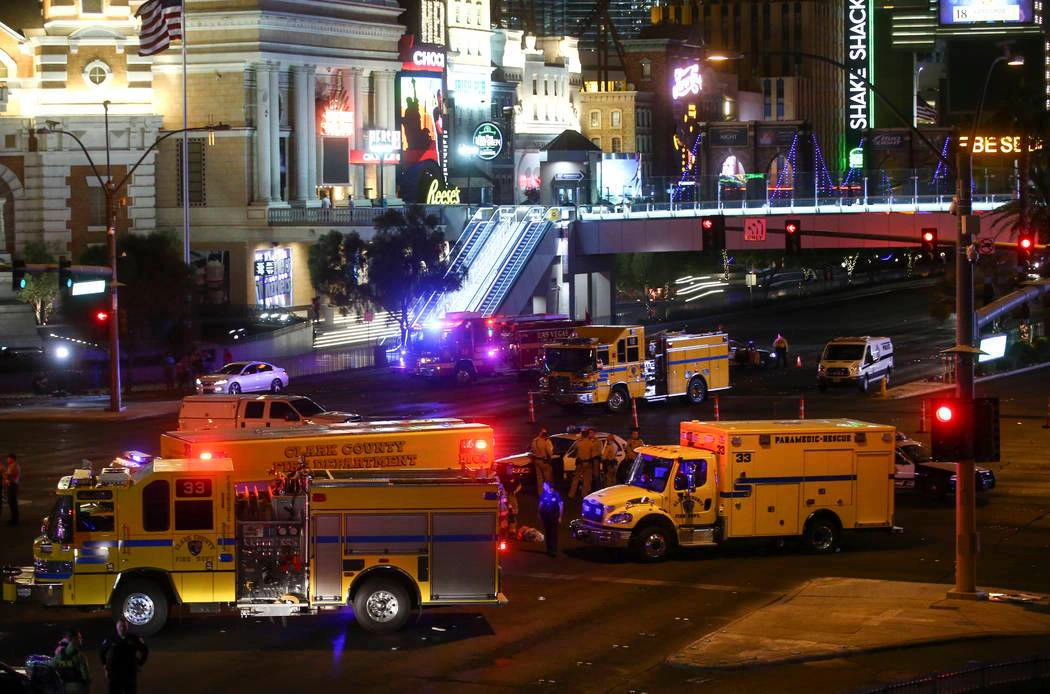
Traffic Incident Management activities involve:
- Quick detection of highway incidents through video detection, loops or 911.
- Verification of highway crashes (CCTV Cameras, monitors, etc.).
- Timely response to the crash or incident by a plethora of incident responders including city, county and state: law enforcement, fire & recovery, public works, engineers, maintenance, private ambulance, EMT, towing companies, freeway service patrol among others.
- Efficient methods for clearing incidents quickly (incentive towing programs, legislative measures that support authority removal and move-it laws allowing vehicles involved in non-injury crashes to move out of travel lanes).
- Restoration of traffic flow back to its pre-incident capacity as quickly as possible.
- TIM performance measures to be implemented throughout the state of Nevada so that the benefits of safe, quick clearance can be demonstrated.
- Timely and accurate information delivered to the traveling public through a variety of communications avenues like media, public information officers, PSAs, internet, real time travel time delivery mechanisms (i.e., smart phones), social media and other tools including NDOT 511 program.
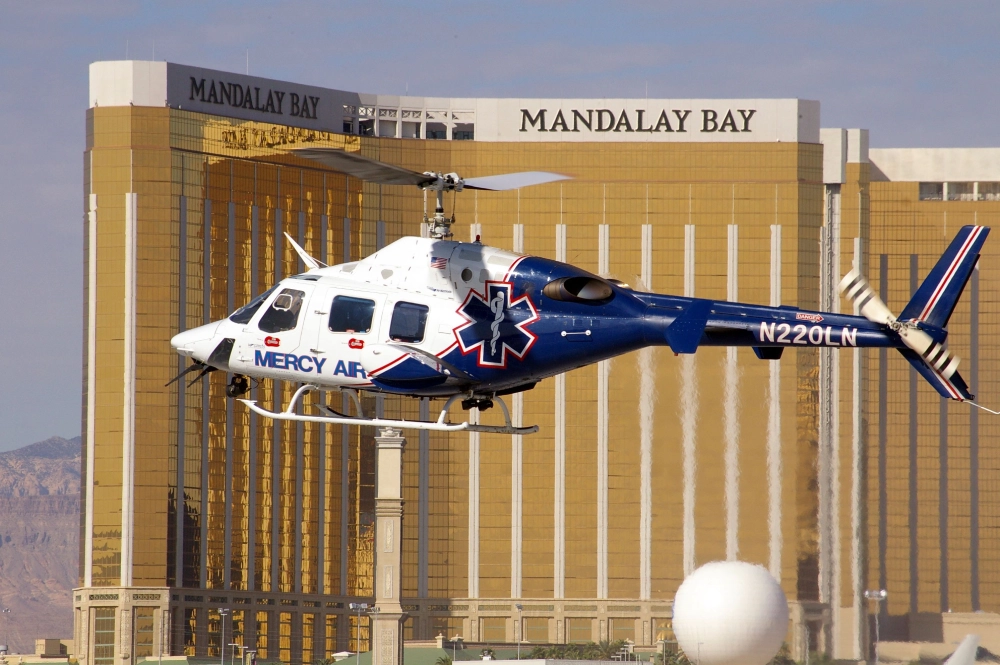

TIM IS NEEDED NOW MORE THAN EVER!
Back in 2018 & 2019, Nevada started to see a decline in fatalities on our roadways. Unfortunately, that was all temporary as in the past 3 years, we have seen over 350 Nevadans killed. The major cause of the fatalities has been impairment & speeding, per the Department of Public Safety. With that, there has been an increased focus of training Nevada’s First Responder community and to emphasize the importance of safety while on scene of a vehicle crash. This has lead to over 2200+ of the first responders in Nevada being trained in the SHRP2 4-hr TIM Training classes in the past 3 years. Over 82% of Nevada’s responders who are involved in clearing crashes and traffic management activities throughout Nevada, have participated in TIM SHRP2 Multiagency Training, presented through the TIM Coalition FHWA certified trainers. Currently, Nevada is currently is highly ranked in the nation for First Responders being trained in this worthwhile and life saving training. We will continue to push this training to keep all involved as safe as possible. A major focus will continue to be of the safe, quick clearance of an vehicle crash.
All agencies also follow the Nevada Statewide Open Road Policy, signed by NDOT, DPS and the Governor and supported by the Nevada TIM Guidelines. Kudos to Nevada’s AMAZING incident responders for saving lives!
Below is a video to bring attention to the bad start in 2022 in which 9 people were killed in 1 crash on January 29, 2022 in Southern Nevada. This incident definitely had an impact to the North Las Vegas community as well as all First Responders in the area and beyond.
2024 Nevada Fatalities
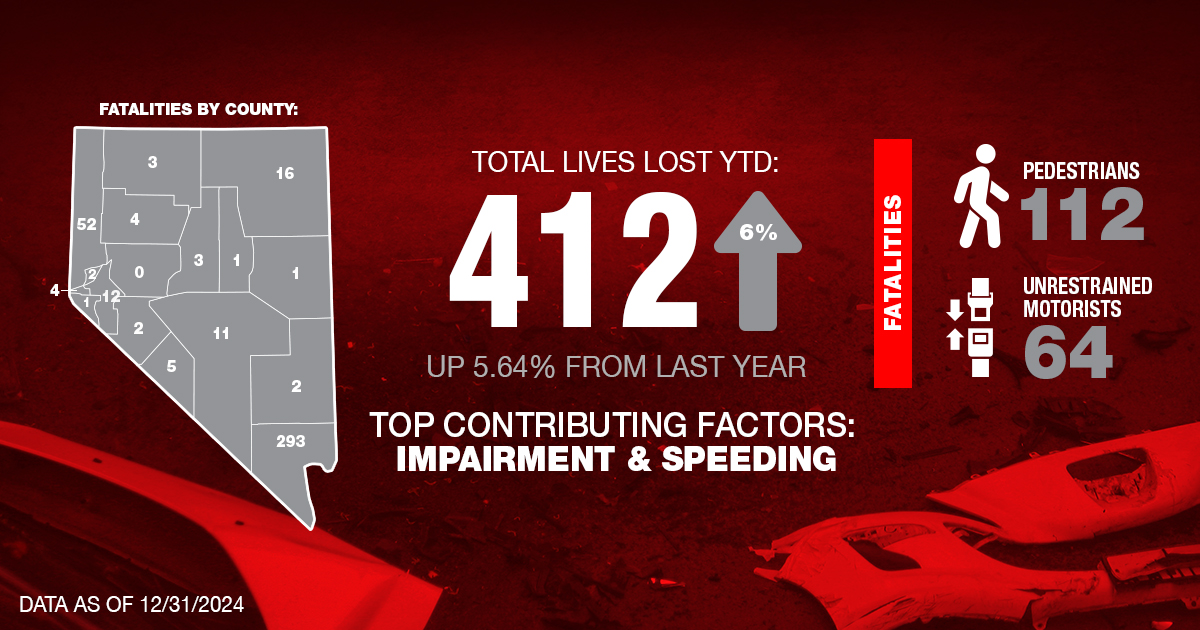
2025 Nevada Current Fatalities
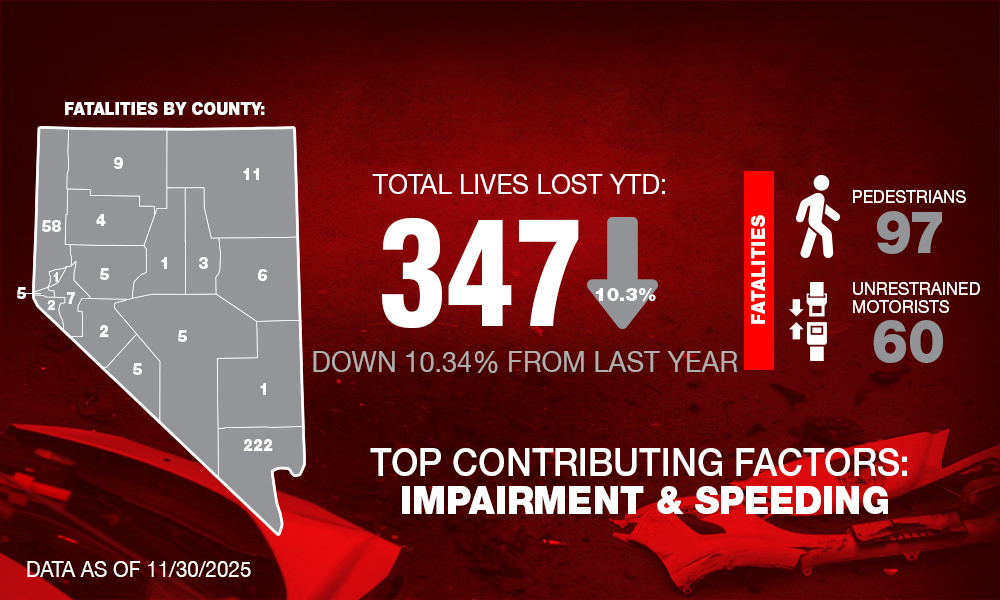
First Responder Safety
The national numbers for first responder struck-by’s is a number that we all cannot live with. Per Respondersafety.com, the numbers since 2019 have gone up. As Nevada’s First Responders, we have to do all we can to protect our brothers and sisters while they are on scene of a traffic crash. The national struck-by numbers are as follows:
2019 – 44
2020 – 46
2021 – 65
2022 – 50
2023 – 45
2024 – 46
- 26 Law Enforcement
- 3 Fire/EMS
- 12 Tow Operators
- 5 DOT/SSP
For statistical information for past years and for 2025, please click on the link below.
Nevada Legislative Initiatives Supporting Traffic Incident Management:
Below are some reference for the laws passed for the benefit of Nevada’s First Responders:
Senate Bill 312 was signed by Governor Brian Sandoval in May 2017. This important legislation strengthens several TIM-related laws, including the requirement for cars to move over or slow down for emergency vehicles, requirements for motorists to move cars from the travel lanes after a crash if possible, and vehicle removal laws. The legislation went into effect on October 1, 2017. You can read the legislation here:
Senate Bill 312 (NRS 484B.267)
Assembly Bill 2 enacts all First Responders that are not covered under any other emergency lighting laws to incorporate the use of non-flashing (static) blue lights to the rear of the vehicle. You can read the legislation here:
Assembly Bill AB2 (NRS. 484B.607)
Assembly Bill AB56 (NRS 484B.210 discusses the Running of the Shoulder for First Responders as well as the details and regulations related to this bill. You can read the legislation here:
Nevada initiatives underway or planned in the near future:
The Nevada Open Roads Policy was renewed during the October 2021 Nevada Traffic Safety Summit in Las Vegas. To review details of the policy, please click below on the Nevada Open Roads Policy link below.
2024 Rural Traffic Safety Summit
In July of 2024, Nevada TIM Coalition & NDOT, partnered with local First Responders to hold a Rural Safety Summit in Elko, NV. This summit had various sessions with presentations and interactions that proved to be very valuable. The topics that were presented covered many items such as a Communications Update, Federal & Local Grants Update, Speed in the Rurals, Electric Vehicle Response, a DUI Workshop, and concluded with a 3 vehicle MCI demonstration. This event was very well attended by over 80 local and statewide First Responders and others. NDOT was able to produce this video during the event. We are grateful to all of those that attended this worthwhile event as well as all of those that helped to coordinate the sessions and the MCI demo.

